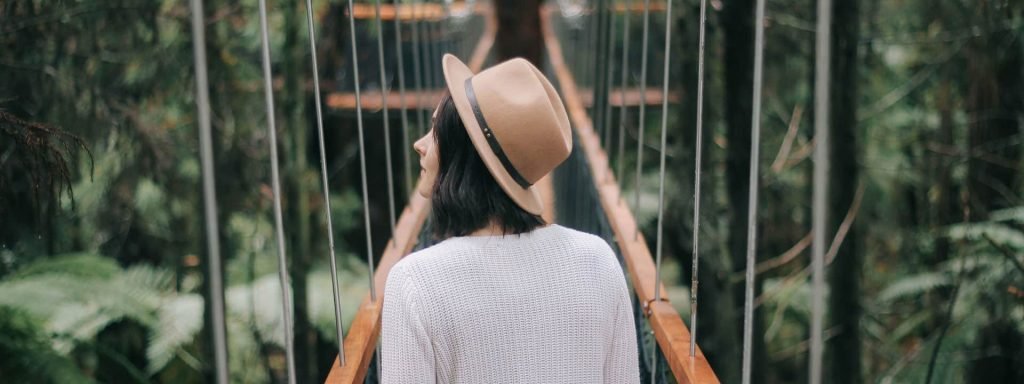Mountain Magic: Exploring France’s Ancient Farm Stays
Escape to France’s Timeless Mountain Farm Stays
A collection of centuries-old mountain farm lodges tucked away in the peaceful French Alps offers more than just a rustic getaway. Time appears to stop still in these quaint havens rich in tradition and history. Experience it for yourself. Discover the enduring charm of France’s alpine farmhouses, from indulging in locally made cheese to waking up to spectacular views. Situated amidst the French Alps, ancient mountain farm stays provide more than simply a vacation experience; they extend an invitation to travel back in time. With their rich histories and customs, these rustic farmhouses offer a singular chance to experience a more straightforward way of life where the natural rhythms set the pace and each day is filled with peaceful beauty.
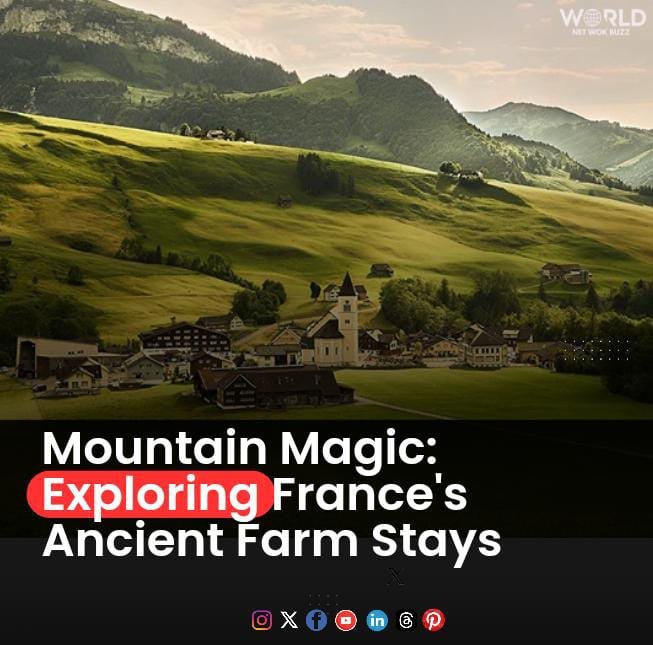
A Morning in the Alps
Imagine waking up to the gentle clinking of cowbells echoing through the crisp mountain air. The soft light of dawn filters through wooden shutters, illuminating a room filled with the charm of yesteryear. Stepping outside, you are greeted by panoramic views of snow-capped peaks and verdant pastures. This is daily life at a French mountain farm stay, where guests are treated like family and welcomed into a world where time-honored traditions are alive.
Hands-On Farm Life
One of the most fascinating parts of these visits is being able to take part in the everyday operations that keep these farms running. Visitors can assist with seasonal harvesting, feeding hens, and even milking cows. It’s a practical experience that develops a profound respect for the rural way of life and illuminates the effort and commitment required to preserve these farms. There’s a tangible connection to the land, and helping around the farm gives you great satisfaction.
Culinary Delights
The main component of a farm stay experience is food. Some of the best cheeses in France are made in the ideal environment—the Alpine pastures. Generically-passed techniques make varieties such as Reblochon, Beaufort, and Tomme de Savoie. Indulge in copious sampling, tour the on-site dairies, and discover how cheese is made. The farm-to-table dinners come with a selection of cured meats, freshly baked bread, and homemade jams, all to be enjoyed with a glass of locally made wine. Every meal honours the rich culinary legacy of the area.
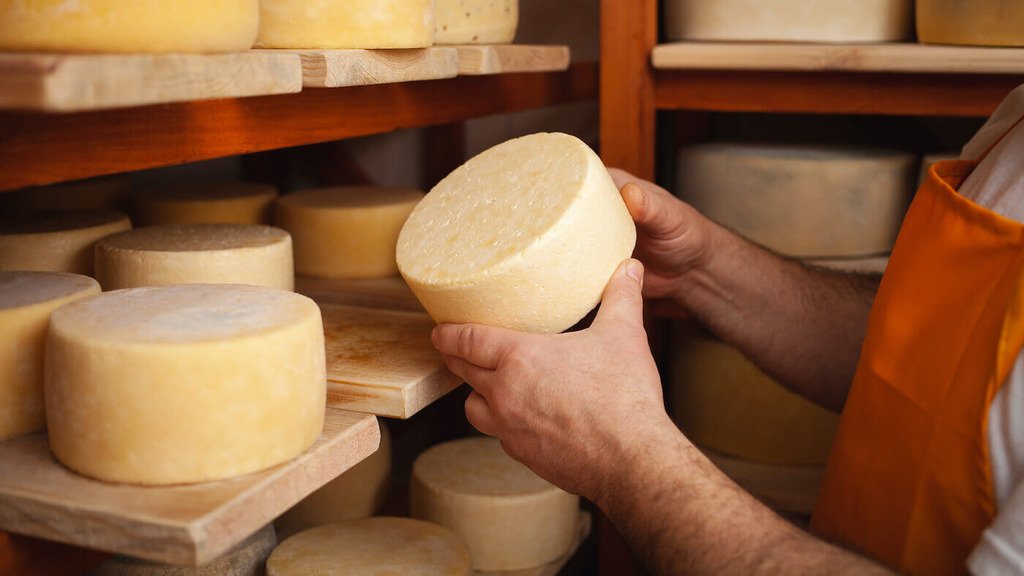
Exploring the Natural Beauty
The surrounding natural splendor provides countless options for discovery and adventure beyond farm activities. The mountains are crisscrossed by hiking routes that take you to beautiful vistas, where the vast Alpine scenery opens up before you. These trails transform into serene cross-country skiing routes in the winter, providing a tranquil approach to exploring the icy paradise. Excellent downhill skiing and snowboarding are available at adjacent ski resorts for those looking for even more excitement.
Accessibility and Charm
These mountain farm stays are surprisingly accessible despite their charming remoteness. Many are conveniently close to well-known cities like Chamonix and Annecy, providing a perfect getaway from the rush of city life. Travelling to these farms is a scenic trip in and of itself, with winding roads that lead to quaint villages, old churches, and vibrant community markets. The feeling of discovery and adventure is increased with every bend in the route.
Supporting Rural Communities
Relishing a nostalgic stay at a mountain farm also contributes to sustainable tourism and preserving these small rural communities. Since many of these farm stays are run and maintained by families, your presence supports their way of life. Thanks to this type of tourism, these farms can stay in operation and pass on their traditions to the next generation.
Ferme du Grand-Paradis
Consider the Freme du Grand-Paradis, part of the Aravis Mountain range. The property, which has been in the same family for more than 200 years, provides a rare glimpse into the lasting customs of Alpine farming. Guests can stay in exquisitely refurbished stone cottages, each with unique charm and personality. Jean-Luc and Marie, the owners, are happy to share their legacy with guests since they are passionate about it. In addition to cheese-making courses and guided farm visits, they also provide cookery sessions to learn how to make classic Savoyard cuisine.

Chalet La Vieille Étable
Situated in the charming village of Les Gets, the Chalet La Vielle Étable offers an equally pleasant farm stay. This property, which dates back to the 18th century, has been painstakingly refurbished to preserve its historical features while providing contemporary conveniences. Guests may fully unwind and relax in the warm and inviting atmosphere provided by the proprietors, Pierre and Sophie. The farm’s proximity to hiking and biking paths makes it the perfect place to explore the countryside.
Ferme de la Mense
Consider visiting the Freme de la Mense in the Chartreuse Mountains for a rural experience. Cosy lodging is offered in these classic wooden chalets, and Laurent and Isabelle, the proprietors, encourage visitors to unplug from electronics and reconnect with nature. Stargazing sessions are under the pristine Alpine skies, outdoor yoga classes, and foraging for wild plants.
Conclusion
Travelling to France’s centuries-old mountain farms is a singular and exciting experience. These farm stays offer the ideal getaway, whether you want to experience authentic farming methods, indulge in the area’s cuisine, or just take in the tranquility and splendour of the Alpine scenery. In addition to making priceless memories, booking a stay at one of these farms helps to preserve a way of life that has survived for many generations. So, gather your belongings, bid farewell to the contemporary world, and experience the enduring allure of France’s alpine farms.
Discover Lausanne: The Heartbeat of the Olympic Movement.
"Lausanne: Switzerland’s Olympic Capital Blending Tradition and Modernity"
Nestled on the northern banks of Lake Geneva, Lausanne is a charming city in Switzerland that combines a love of sports, culture, and history harmonically. The International Olympic Committee (IOC) has called Lausanne, the “Olympic Capital,” home since 1915. However, this city is more than just a centre for international sports; it’s a thriving, dynamic location that welcomes guests to take in its distinct beauty and energy. Lausanne, a quaint Swiss city tucked away among Lake Geneva’s gorgeous beaches, is the vibrant centre of the Olympic movement. With its breathtaking scenery, rich cultural history, and ardent devotion to sports, Lausanne skillfully combines modernity and tradition. This dynamic city, home to the International Olympic Committee, is a special place where history and modernity collide and will play a significant role in determining the direction of international athletics in the future. Explore the vibrant atmosphere of Lausanne with us—a city that lives and breathes the Olympic dream.

The Heart of the Olympic Movement
The International Olympic Committee (IOC) was established in Lausanne in 1915 by Pierre de Coubertin, who created the modern Olympic Games. This decision cemented Lausanne’s reputation as the epicenter of the Olympic movement. Since then, innovation and sports administration have made Lausanne a global centre. One example of this legacy is the Olympic Museum in the quaint Ouchy neighbourhood. The museum encourages visitors to explore the history of the Games, from their ancient roots to their contemporary iteration, with its captivating exhibits and interactive displays. By looking at its halls, you will better understand the Olympic spirit and its historical development.
A City of Contrasts
The allure of Lausanne is its ability to combine the old with the new easily. The city’s steep landscape offers breathtaking views and a variety of historically significant architectural styles. The stunning Gothic masterpiece, the Cathedral of Notre Dame, which was built in the thirteenth century, provides a window into Lausanne’s mediaeval past. Both history buffs and connoisseurs of architecture must see it for its magnificent interior and elaborate façade. The Flon neighbourhood, on the other hand, highlights Lausanne’s modern side. Flon, formerly an industrial region, has been transformed into a hip neighbourhood with many fashionable stores, busy cafés, and lively nightlife. How the old and the new are juxtaposed here demonstrates Lausanne’s capacity to respect the past while welcoming the future.
Embracing Culture
Lausanne is a cultural gold mine that offers many experiences for those who enjoy the arts and performing arts. A notable example of outsider art produced by self-taught artists who frequently work outside the mainstream art scene is the city’s Collection de l’Art Brut. The compilation offers a novel viewpoint on artistic expression and celebrates unadulterated, unprocessed creativity. A cultural treasure for live performance enthusiasts is the Opéra de Lausanne. Its varied schedule offers a wide range of options for theatregoers, including opera, ballet, and classical concerts. In addition, Lausanne’s old town is transformed into an outdoor theatre, dance, and music venue each summer for the festival de la Cité.
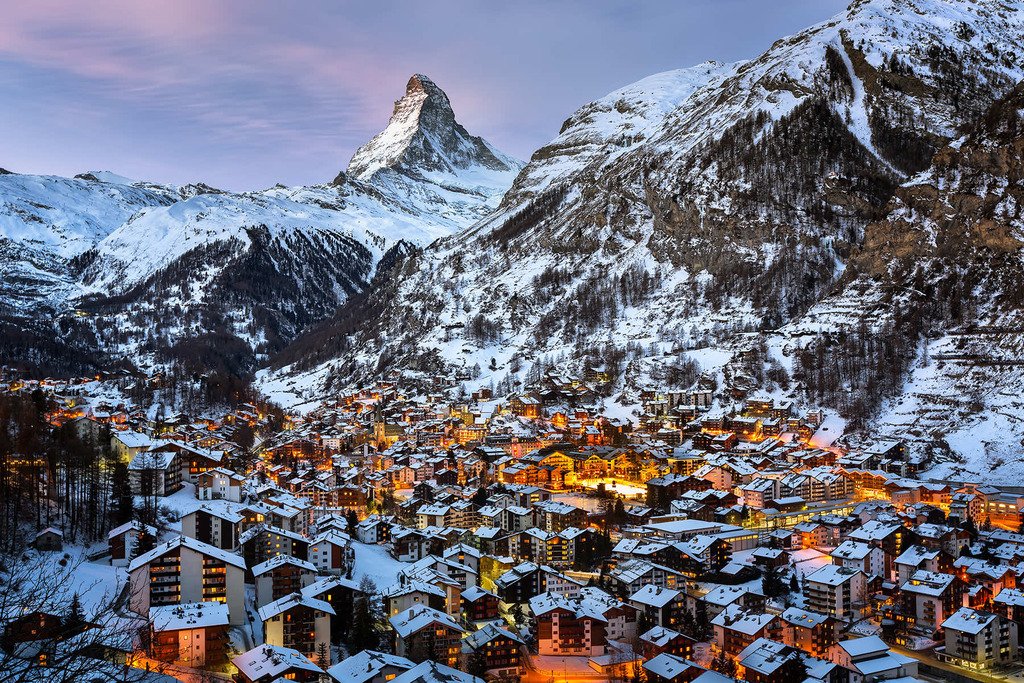
Outdoor Adventures Await
Lausanne’s breathtaking natural surroundings make it a haven for outdoor enthusiasts. The city is surrounded by various outdoor activities, with the Alps to the south and the Jura Mountains to the north. Popular activities like biking, skiing, and hiking offer routes and slopes suitable for every ability level. For those who like to explore beautiful landscapes, the adjacent Lavaux vineyards are a highlight and are recognized as a UNESCO World Heritage site. The hiking routes offer an opportunity to enjoy the local wines and admire the breathtaking views of the mountains and lake from the terraced vineyards. One of the central locations for water sports is Lake Geneva. The lake is famous for swimming, paddleboarding, and sailing in warmer months. Ouchy’s lakefront neighbourhood is ideal for unwinding and enjoying yourself because of its lovely parks and promenades. The lake’s quiet waters and picturesque surroundings offer a peaceful haven from the daily grind, whether you’re taking a leisurely stroll or relishing a boat trip.
Culinary Delights
Discovering Lausanne’s food scene is a must-do while visiting. The city provides a delicious blend of international and traditional Swiss food. Local specialties like fondue and raclette highlight Switzerland’s passion for cheese, while the area’s vineyards offer excellent wines that go well with any dish. Local vegetables and culinary treats can be sampled at Lausanne’s markets, such as the one at Place de la Riponne. The city has many Michelin-starred restaurants where chefs use the best ingredients to produce inventive meals for a unique dining experience. Enjoying a meal in Lausanne is more than just the cuisine—it’s about the feeling of living in a place that appreciates excellence and originality.
A Commitment to Sustainability
Lausanne is committed to sustainable living and is dedicated to environmental care. The city partly promotes eco-friendly behaviors through its well-kept parks, green areas, and effective public transit system. The town incorporates sustainability into its urban layout, as seen by the biennial Lausanne Jardins festival. This festival highlights Lausanne’s commitment to green innovation and community participation by transforming urban areas into temporary gardens.
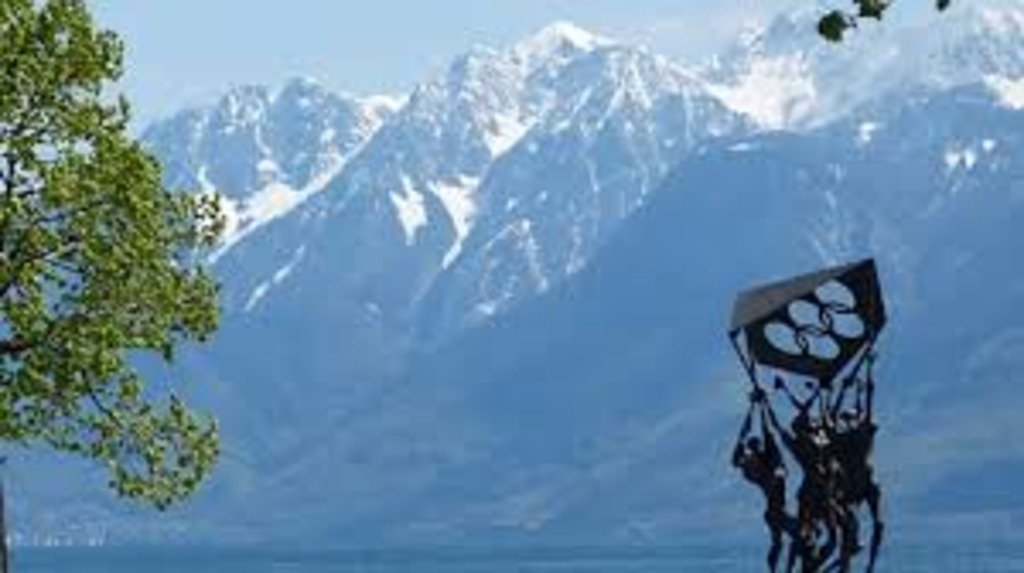
Year-Round Appeal
There is always a good time of year to visit Lausanne. The city comes alive in the spring and summer with festivals, open-air events, and lively markets. Autumn is a great time to visit the region since it gives the Lavaux vineyards a golden tint. With Christmas markets, ice skating rinks, and easy access to neighbouring ski slopes, winter creates a warm and inviting ambience. There’s always something interesting to find in Lausanne because every season offers a different perspective on the city.
A Warm Welcome
The friendliness of the locals is what makes Lausanne unique. The city’s people are renowned for being hospitable and friendly, making guests feel at home. Discovering the city’s cultural activities, strolling down its cobblestone streets, or taking in the breathtaking views of the lake will all reveal that Lausanne’s allure is rooted not just in its natural beauty but also in the genuine friendliness of its people.
Conclusion
Lausanne is a city epitomizing Swiss sophistication and is a global symbol of the Olympic spirit. It is a destination unlike any other because of its singular fusion of history, culture, scenic beauty, and dedication to sustainability and innovation. Discovering Lausanne will show you a city that honours the Olympic Games and lives up to their principles in every aspect of daily life. Whether you’re interested in sports and history or just looking for a lovely relaxing location, Lausanne provides a fantastic experience you won’t forget.
“Why 96% of Citizens in This Country Own Their Homes”
Add Your Heading Text Here
Lorem ipsum dolor sit amet, consectetur adipiscing elit. Ut elit tellus, luctus nec ullamcorper mattis, pulvinar dapibus leo.

The Slovak Housing Dream
In Slovakia, becoming a homeowner is not only a goal but a fundamental aspect of the country’s character. In sharp contrast to many other countries where renting is more frequent, the nation has one of the highest rates of owning in the world.
The historical background and socioeconomic policies of the nation can be linked to this phenomenon. Private property was restricted and housing was mostly under governmental control throughout the communist era. Slovakia, like many other former Eastern Bloc nations, had a dramatic shift following the fall of communism in 1989. Homeownership options multiplied as a result of privatization and market reforms, and many residents seized the opportunity to become property owners.
The Role of Government Policies
This high homeownership rate has been fostered in large part by government programs. For example, the Slovak government has put in place a number of programs, including subsidies and affordable housing developments, to assist first-time homebuyers. People may now buy homes more easily thanks to these policies, especially in a nation where costs are lower than in other European countries.
Furthermore, the Slovak banking industry provides advantageous mortgage conditions, such as long payback terms and cheap interest rates. Together with a steady and expanding economy, this financial assistance has inspired more people to make real estate investments.
The Impact on Society
Slovakia’s high homeownership rate has benefited society in a number of ways. One benefit is that it has enhanced residents’ feelings of stability and security. The sense of permanency and connection that comes with owning a house is frequently linked to improved personal and communal well-being.
Furthermore, homeownership has been connected to other positive societal effects, such as improved health and higher levels of education. People are more inclined to give back to their communities and participate in local activities when they have a stable and safe place to reside.
Challenges and Future Outlook
Even with all of the advantages, there are drawbacks to such high rates of homeownership. For instance, there are doubts over this trend’s long-term viability, particularly in light of shifting housing laws or economic volatility. Affordability of housing and accessibility for future generations are further issues.
To guarantee that all Slovak people may still become homeowners, the government will need to keep modifying its laws. This might entail striking a balance between policies aimed at addressing possible problems with housing supply and affordability and assistance for purchasers.
A Unique Housing Landscape
Slovakia’s remarkable percentage of homeownership is the result of a special fusion of favorable laws, cultural norms, and historical background. The history of the nation provides important insights into how focused government initiatives combined with advantageous economic circumstances may foster a housing market in which the great majority of people can become homeowners.
It will be fascinating to watch how Slovakia maintains its high homeownership rate while tackling the new issues as it continues to navigate the changing real estate and economic growth landscape. For the time being, Slovakia’s housing market narrative offers a powerful illustration of how a country’s past and present may influence the goals and aspirations of its citizens.
“Life in the World’s Most Livable Cities of 2024”
"Urban Utopias: Discovering Life in 2024's Best Cities"
Imagine waking up to the gentle murmur of a city that is frequently listed as one of the greatest locations on earth to call home. Imagine yourself meandering through parks that are decked with colorful flowers and have pure, fresh air. You nod cordially to neighbors who recognize you, and there’s always a café nearby offering mouthwatering local specialties that tempt your palate. In the most livable cities in the world in 2024, this is daily life. There is a tangible sense of the quality of life in these urban havens rather than merely numbers. It’s in how the city’s streets are immaculately clean, public transport is consistently on schedule, and every area appears to have been planned to make life a little bit easier.

Imagine waking to the soft murmur of a city that is ranked among the world’s best places to live, year after year. Imagine taking strolls through colorful parks, engaging in conversation with genuinely friendly neighbors, and enjoying delectable local cuisine that entices your palate. The most livable cities in the world in 2024 provide a nearly utopian standard of living in addition to comfort and ease. These towns, which range from the creative neighborhoods of Tokyo to the picturesque streets of Vienna, are good examples of how to build places where people may really flourish.
Vienna, Austria
It’s easy to understand why Vienna is frequently ranked as the most livable city in the world. The city combines modern efficiency with antique beauty. Envision commencing your day with an early stroll along the Ring Strasse, where breathtaking 19th-century architecture envelops you. There’s no better way to start the day than with a mélange (Viennese coffee) and a flaky croissant at one of the numerous little coffee shops in the city. Viennese coffee culture is renowned. The U-Bahn (subway) in Vienna is a dream come true for travelers; it’s efficient, clean, and gets you wherever you need to go. Weekends are generally spent taking advantage of the many green areas in the city, such as the Schönbrunn Palace Gardens or the Prater with its famous Ferris wheel. Vienna boasts a thriving cultural environment, with nearly every night including world-class opera, theatre, and concert performances.
Zurich, Switzerland
Although Zurich is well-known for its banking sector, there are many more benefits to living here besides stable finances. Zurich’s residents enjoy a high standard of living, with snow-capped mountains in the background, immaculate lakes, and well-kept parks. Without a car, getting around the city is simple, thanks to one of the best public transport systems in the world. Picture spending a Sunday trekking in the neighboring Swiss Alps, then unwinding at a fondue restaurant that evening. Swiss classics, as well as foreign food, may be found in Zurich’s sophisticated and varied culinary scene. The city’s citizens have a great sense of safety and well-being in part because of its effective public services and low crime rate.
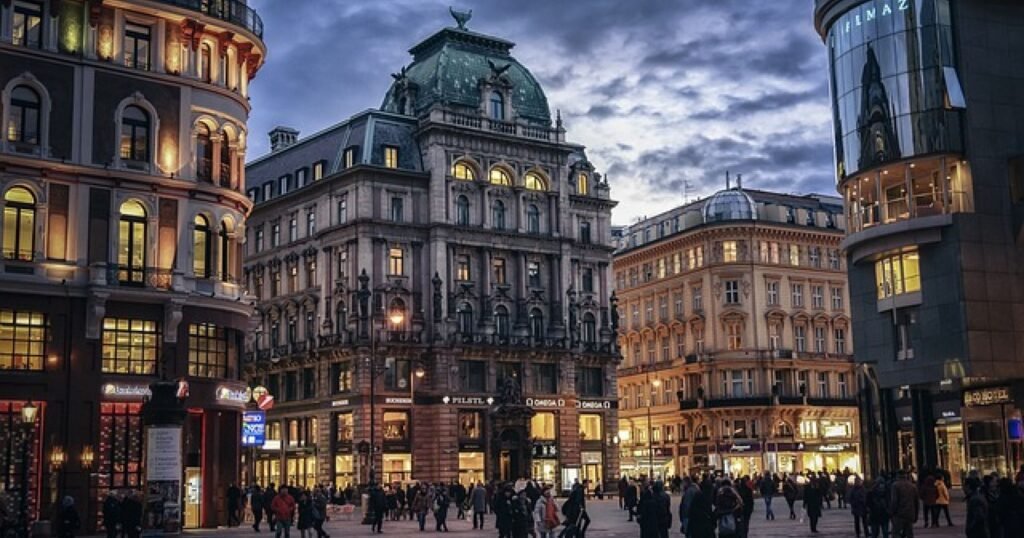
Copenhagen, Denmark
Copenhagen appears to have mastered the art of striking the right balance between work and play. It is well-known for its bicycle culture, and most locals would much rather ride their bikes than drive their cars. The city’s wide bike lanes and bike-friendly traffic patterns are examples of its thoughtful design for bikers. Riding a bike around the city with the wind in your hair and feeling like you’re making a positive impact on the environment can be immensely liberating. The term “hygge,” which loosely translates to coziness and comfortable conviviality, is associated with the Danes. This is clear from the abundance of cafes in Copenhagen, where you can unwind with friendly people and a warm beverage. The food sector in the city is flourishing, with a focus on using sustainable and local ingredients.
Tokyo, Japan
Tokyo is a metropolis that successfully combines the old and the ultra-modern. Living in Tokyo offers the opportunity to experience both centuries-old traditions and customs as well as some of the most advanced infrastructure and technology available worldwide. Tokyo’s public transport is renowned for being on time and efficient, which makes getting about this large city simple. Tolkienian daily life can be very varied. You may visit a calm Shinto shrine in the morning, eat lunch at a busy sushi restaurant, and then stroll around Shibuya’s neon-lit streets in the evening. Tokyo residents take tremendous satisfaction in the orderliness and cleanliness of their city, as seen by the immaculate streets and public areas. Tokyo has a lot of parks and green areas despite its size.

Melbourne, Australia
Melbourne’s population is diversified, it has a thriving arts scene, and it has a strong feeling of community. The city’s alleyways are well-known for its boutique stores, secret cafes, and street art. Being a resident of Melbourne entails being a part of a creative and innovative city. You can easily explore the city and its surroundings thanks to the dependable and efficient public transportation system, which includes buses, trains, and trams. In Melbourne, people frequently spend their weekends at sporting events, music festivals, or local markets. The city’s diverse population is reflected in the variety of international cuisines available in its culinary scene. Melbourne’s parks and gardens are ideal for outdoor activities, including picnics and strolls.
Conclusion
More than simply having access to facilities and services, living in the world’s most livable cities for 2024 will include adopting a lifestyle that puts sustainability, community, and well-being first. These cities provide an insight into the ideal form of urban living, where all aspects of daily life are thoughtfully planned to improve well-being. Every one of these towns, from Tokyo’s inventive spirit to Vienna’s elegant historical past, has something special to offer its citizens. Therefore, it’s undeniable that living in the most livable cities in the world is genuinely something to aspire to, whether you’re thinking about moving there or you’re just interested in learning what makes them so unique.
“Walking the Ridgway: A 5,000-Year-Old Pathway Steeped in History”
The Ridgway Hike: Walking Britain's Oldest Road
Take a trip back in time on the 5,000-year-old Ridgway, which is known as Britain’s oldest road and is rich in myth and history. This historic path provides a rare chance for contemporary adventurers to follow in the footsteps of our predecessors, having formerly been an essential route for traders and travelers. A remarkable combination of historical significance and natural beauty, the Ridgway stretches over the stunning regions of southern England. Hiking this venerable trail will unveil the rich tapestry of Britain’s past through breathtaking views, quaint communities, and prehistoric sites. Come along as we examine the enduring charm of the Ridgway and learn why hikers and history buffs alike still adore it. Imagine strolling along a path that has been used for 5,000 years by travelers, traders, and even legendary warriors. The Ridgway, the oldest road in Britain, provides exactly that—a trip back in time via a historic path that winds through the rural southern English countryside. This historic route offers you an immersive experience that immerses you in the rich history of Britain, much more than just a stroll through the countryside.
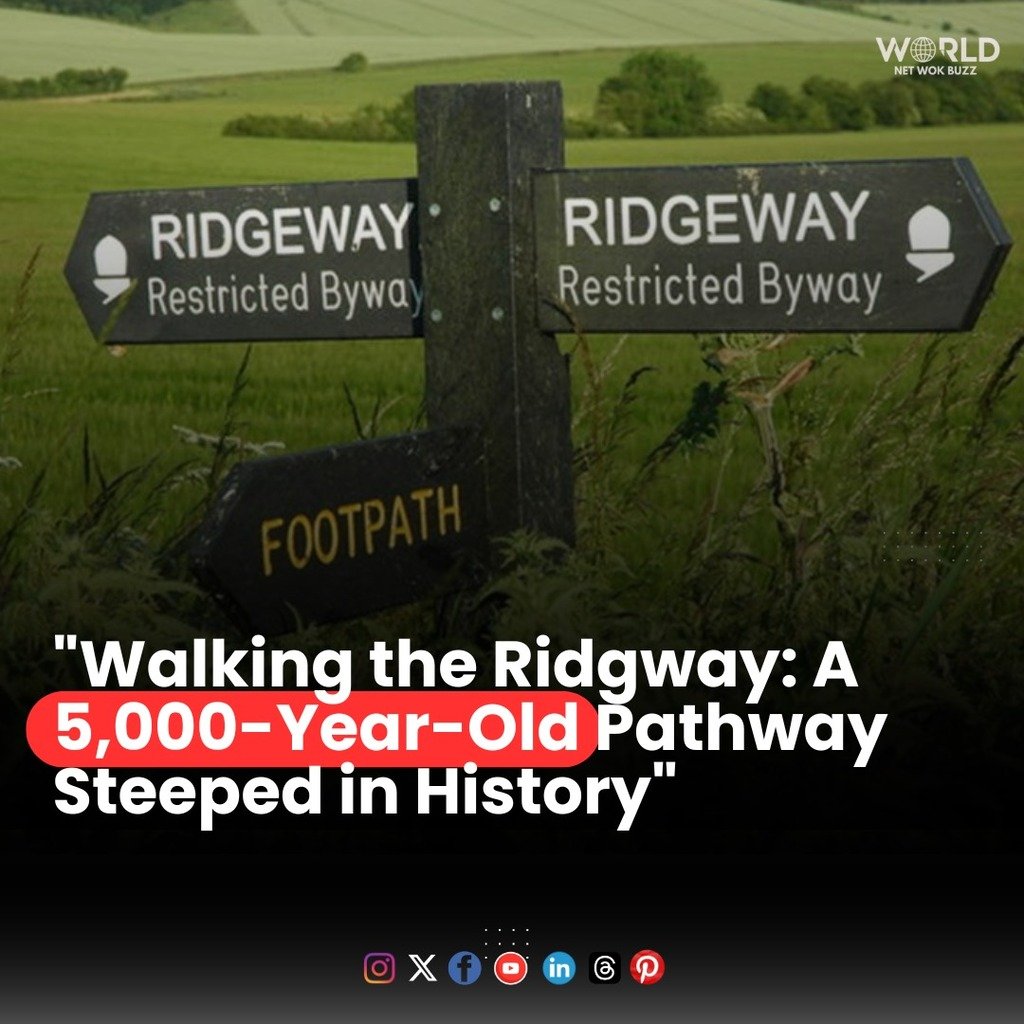
A Walk Through History
From Overton Hill in Wiltshire to Ivinghoe Beacon in Buckinghamshire, the Ridgway extends approximately 87 miles. It is one of the earliest paths in Britain that is known to exist, having originated in the Neolithic era. For prehistoric people, the trail served as an essential route that allowed them to travel and trade throughout the area. It is now a beloved long-distance walking path for both history buffs and hikers. You’ll immediately discover that the Ridgway is a living museum when you set out on this walk, not just a route. Ancient landmarks that each tell a different tale of the past are scattered along the road. The Uffington White Horse, a massive chalk image carved into the hillside, is one of the most famous locations.
Natural Beauty and Serenity
Along with learning about history, walking the Ridgway is a trip through some of England’s most breathtaking scenery. The North Wessex Downs, the Chiltern Hills, and the Thames Valley are among the areas the trail crosses; each offers a different landscape and a peaceful atmosphere. Hiking between magnificent rolling hills, panoramic valleys, and old trees is the perfect experience. Disconnecting from the rush of modern life is one of the pleasures of walking the Ridgway. There are sections of the path where the only noises are the rustling of leaves and the singing of birds, giving the impression of a tranquil getaway. It’s an opportunity to get back to basics and take in the serene beauty of the English countryside.
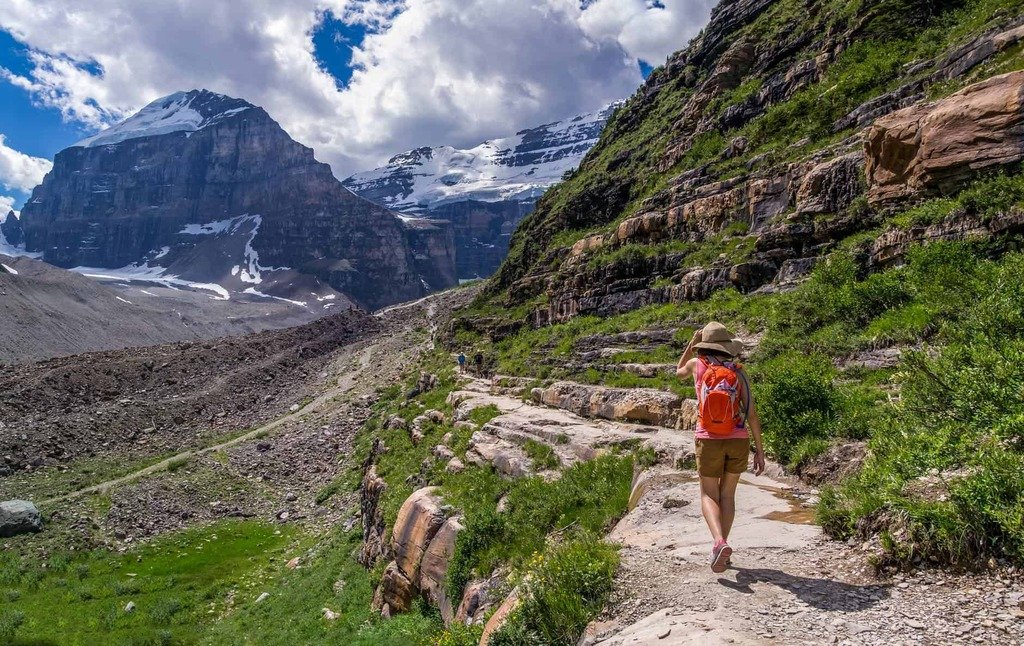
Charming Villages and Warm Hospitality
You’ll pass through quaint villages along the route that look like they belong in a storybook. Locations like Goring-on-Thames, which is tucked away along the banks of the River Thames, and Avebury, with its magnificent stone circle, provide enjoyable stops for relaxation and exploration. These little communities are full of personality and history, and they have warm inns and friendly pubs where you can have a hot dinner and a comfortable bed. The warmth of the locals enhances the appeal of the Ridgway experience. The people here are welcoming and willing to share their history and expertise of the place. The sense of camaraderie and connection is evident whether you’re conversing with a fellow hiker on the route or enjoying a pint of ale in a typical pub.
An Adventure for All Levels
The Ridgway is fantastic because it can accommodate hikers of various skill levels. The track is suitable for all skill levels of hikers, from casual day hikers to seasoned long-distance walkers. You have the option to hike the entire Ridgway over a few days, staying in quaint lodgings along the way, or you can focus on shorter hikes that fit your fitness level and timetable. There are lots of chances to check out side trails and attractions for anyone who likes to move more slowly. A must-see UNESCO World Heritage monument that provides a window into Britain’s prehistoric past is the Avebury Stone Circle. Another fun diversion is the village of Aldbourne, with its charming streets and old church.
Connecting with the Past
A profoundly immersive experience, walking the Ridgway offers you a fascinating window into the past. You can’t help but experience continuity and connection as you walk the same path that ancient people once took. The route creates a concrete connection to the generations who came before us and presented a distinctive viewpoint on the history and culture of the area. Everywhere you look, you can feel the weight of history. The Ridgway is an exploration of layers of history, taking visitors from Iron Age hill forts such as Barbury Castle to the ruins of Roman roadways. You have a better grasp of the life of folks who traveled this road thousands of years ago with each step you take.
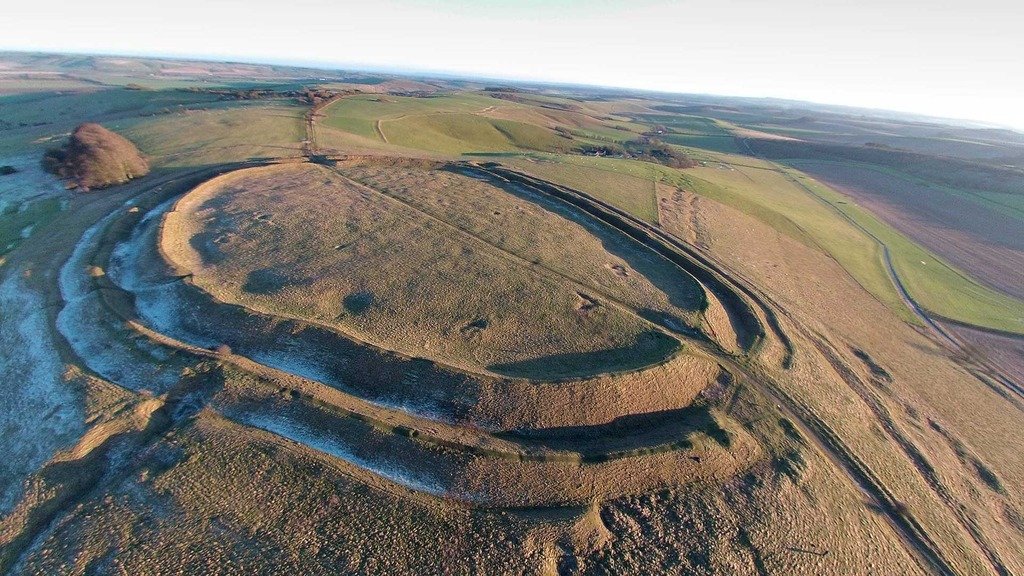
Practical Tips for the Journey
In case you’re considering hiking the Ridgway, here are some useful suggestions to guarantee a hassle-free and delightful experience: Make a Route Plan: Choose if you wish to trek some parts of the trail or the entire length. Plan for your lodging and rest periods, especially during the busiest times of the year. Pack Shrewdly: Packing clothes and equipment suitable for different weather conditions is advised. Layers, a rain jacket, and sturdy hiking boots are necessities. Maintain Your Hydration and Energy Level: Bring along enough water and snacks to sustain your energy and hydration levels during the journey. For a cool respite, there are several cafes and taverns along the route. Respect the Environment: To maintain the trail’s integrity and beauty, abide by the Leave No Trace philosophy. Respect wildlife and stay on trails that have been authorized. Savor the Journey: Give yourself plenty of time to appreciate Ridgway’s natural beauty, history, and culture. Take a moment to take in the scenery, stroll through the villages, and chat with other hikers.
Conclusion
The Ridgway is more than just a walk; it’s an exploration of British natural and cultural history as well as a voyage through time. You will be taken back in time to a period when the paths of many travelers sculpted the terrain as you stroll along this historic trail. The history, the views, or the sense of adventure might entice you to ride the Ridgway, which provides an amazing experience that will stick with you long after your hike is over. Put on your boots, head out onto this well-known trail, and allow the Ridgway to transport you back in time.

“Bindi Irwin’s Ultimate Outdoor Adventures: Discover Australia’s Natural Wonders”
Exploring Australia Through Bindi Irwin’s Top Outdoor Adventures
Australia is a country with amazing scenery, unusual animals, and countless outdoor adventure possibilities. Few people are more familiar with this than Bindi Irwin, the adored television personality and animal campaigner who was raised in the middle of Australia’s natural beauties. Because of her strong bond with the natural world and her passion for adventure, Bindi has visited some of the most breathtaking locations in the nation. With the aim of inspiring, you to embark on your journey into the wild, Bindi shares her top outdoor adventures from Australia in this guide.Take an exciting excursion in the great outdoors with Australia’s most famous wildlife conservationist and adventurer, Bindi Irwin. In this special book, Bindi offers insider suggestions on the finest places to connect with nature, see rare species, and take in the beautiful beauty of this diverse country. She also provides her top picks for outdoor excursions across Australia. Bindi’s suggestions are guaranteed to excite and lead you on an extraordinary journey, regardless of your interests—whether you’re a passionate hiker, a wildlife enthusiast, or just searching for a once-in-a-lifetime getaway into the wild.

Cradle Mountain, Tasmania
Cradle Mountain, tucked away in the center of Tasmania, is a hiking and nature enthusiast’s dream come true. When Bindi speaks of this spot, her eyes brighten. “Cradle Mountain is like stepping into a fairytale,” she claims. Her #1 suggestion is the 65-kilometer Overland Track, which takes roughly six days to finish. Bindi says, “It’s challenging but incredibly rewarding.” You’ll pass through glacier lakes, old rainforests, and breathtaking alpine scenery on your journey. Look out for the echidnas and wombats that live in this area.
Great Barrier Reef, Queensland
The Great Barrier Reef would be mentioned in any adventure guide to Australia. Bindi has a particular place in her heart for the Reef. She smiles and remarks, “It’s like an underwater paradise.” Here, diving and snorkeling are highly recommended activities that give you the opportunity to witness a variety of aquatic life, including colorful fish, sharks, and turtles, as well as beautiful coral formations. For the clearest conditions and the best visibility, Bindi suggests visiting the outlying reefs.
Daintree Rainforest, Queensland
One of the world’s oldest rainforests, the Daintree Rainforest, is located directly to the north of the Great Barrier Reef. “It’s the magic of the Daintree,” exclaims Bindi. “It’s like stepping back in time.” One of her favorite things to do here is take a guided night stroll. “At night, you see so much more,” she says. “The forest comes alive with nocturnal animals.” Keep an eye out for owls, tree kangaroos, and the rare cassowary, a big, locally native bird without wings.
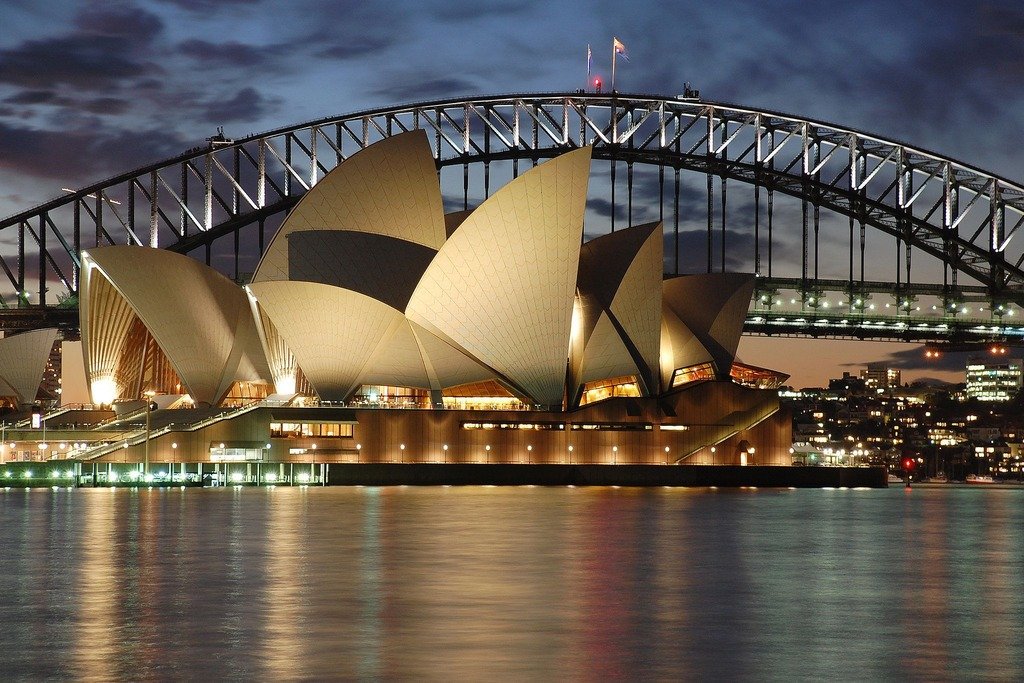
Kangaroo Island, South Australia
Kangaroo Island is a nature enthusiast’s paradise. Bindi adores the chance to witness wildlife in their environments and the area’s untamed splendor. “It’s like Australia’s own little zoo, but without the enclosures,” she continues. You should definitely visit Seal Bay, where you may stroll amid a population of sea lions. Another attraction is Flinders Chase National Park, which offers breathtaking views of the coastline, amazing rock formations like the Remarkable Rocks, and the opportunity to see kangaroos, koalas, and other wildlife.
Uluru, Northern Territory
Ayers Rock, another name for Uluru, is one of Australia’s most recognizable sites. Bindi characterizes her Uluru tour as “spiritually uplifting.” The Anangu people, the land’s original proprietors, revere the enormous sandstone monolith. According to Bindi, “it’s a place of deep cultural significance.” “You can feel the history and spirituality of the land.” If you want to understand the history of Uluru and the Aboriginal people, she suggests going on a guided tour.
Blue Mountains, New South Wales
Sydney can easily be reached by car, and the Blue Mountains provide a breathtaking natural retreat. Bindi adores the breathtaking waterfalls, eucalyptus trees, and sheer cliffs. “The Blue Mountains are perfect for a weekend getaway,” she says. Her two favorite things to do are hike the National Pass and explore the Jenolan Caves. Don’t miss the well-liked Three Sisters rock formation, which offers stunning views of the valley.
Ningaloo Reef, Western Australia
Bindi maintains that Ningaloo Reef is equally amazing as the Great Barrier Reef, despite the latter frequently taking center stage. Ningaloo, an Australian state off the coast of Western Australia, is renowned for its amazing marine life, which includes humpback whales, manta rays, and whale sharks. “Swimming with whale sharks was one of the most amazing experiences of my life,” Bindi says. The reef’s colorful underwater habitat is easily explored because it is reachable from the coast.
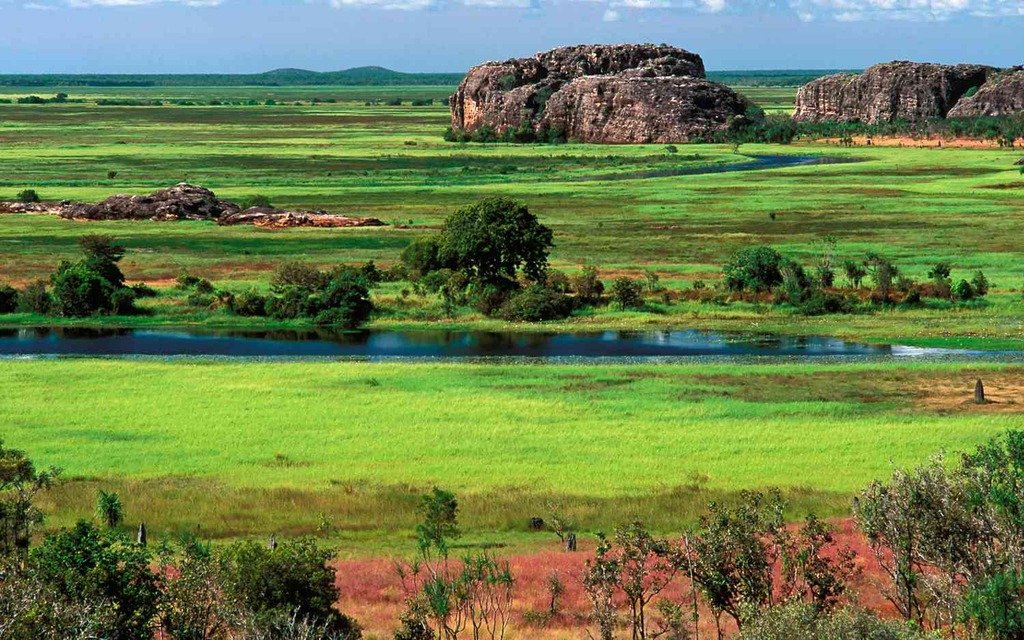
Grampians National Park, Victoria
Bindi’s favorite places are the Grampians because of their breathtaking scenery and extensive Aboriginal history. “The views are absolutely breathtaking,” she declares. Her main advice is to explore Mackenzie Falls and hike to the Pinnacle Lookout. A wide range of fauna, such as wallabies, emus, and kangaroos, can be found in the park. Bindi advises going in the spring when the landscape is already breathtaking, and the wildflowers are in bloom.
Fraser Island, Queensland
The world’s largest sand island, Fraser Island, offers countless opportunities for exploration. It’s what Bindi calls “an island playground.” There’s something for everyone to enjoy, whether it’s driving down 75 Mile Beach or swimming in Lake McKenzie’s pristine waters. “The island’s diverse ecosystems are incredible,” says Bindi. “You can go from rainforest to sand dunes in minutes.” Watch out for dingoes, one of the most recognizable inhabitants of the island.
Cape Tribulation, Queensland
One of the best places in Bindi is Cape Tribulation, which is the point where the Great Barrier Reef and the Daintree Rainforest meet. She marvels, “It’s where two World Heritage sites collide.” It’s a unique experience to dive into the reef and explore the jungle all in one day. For a more comprehensive understanding of the region’s biological significance and biodiversity, Bindi suggests taking a guided tour.
Conclusion
Australia’s greatest outdoor experiences with Bindi Irwin give visitors a taste of the amazing scenery and varied fauna of the nation. There’s always an adventure waiting for you, whether you choose to hike through ancient rainforests, swim bright reefs, or explore craggy coasts. Every suggestion made by Bindi reflects her love of the great outdoors and her commitment to conservation, encouraging us all to venture out and discover Australia’s treasures. So gather your belongings, put on your hiking boots, and set out on a once-in-a-lifetime adventure throughout this amazing country.
“Happiness Hacks: Exploring Helsinki’s Happiest Outdoor Spots”
Uncovering Happiness: A Guide to Helsinki’s Joyful Outdoor Spots
Helsinki is a city where the natural world and the modern world coexist together, tucked away between verdant forests and the calm waters of the Baltic Sea. Helsinki, which is well-known for its inventive spirit and vibrant cultural scene, also has a lot of outdoor areas that welcome both residents and visitors to experience happiness and serenity. This tour will take you to some of the most picturesque outdoor locations in Helsinki, where you can take in the dynamic atmosphere and natural beauty of the city for yourself. Finland’s energetic capital, Helsinki, is well known for its breathtakingly beautiful surroundings and serene outdoor areas. This city offers a plethora of options to find happiness and establish a connection with nature, from peaceful parks to busy waterfronts. Discover the hidden gems where locals and tourists alike can take in the city’s distinct charm and lift their spirits as we explore Helsinki’s loveliest outdoor areas in this guide.

The Allure of Helsinki’s Green Spaces
Helsinki’s profusion of parks and gardens demonstrates the city’s dedication to green areas. These spaces are intended to improve wellbeing and provide a haven from the bustle of the city; they are not merely little pockets of greenery.
Central Park (Keskuspuisto)
A vast green space known as Central Park, or Keskuspuisto, traverses the center of Helsinki. Encompassing more than ten kilometers, it offers an ideal haven for anybody seeking to engage with the natural world fully. Central Park is a relaxing retreat, whether you’re riding through the thick vegetation, wandering along its twisting walkways, or just having a quiet picnic. The park offers a variety of leisure opportunities and is home to a broad range of wildlife. Explore the natural landscapes, and you may see native birds and maybe even a few deer. The park is colored differently with the passing of the seasons, providing a novel experience all year round.
Esplanadi Park
Helsinki’s iconic urban park, Esplanade Park, is located in the heart of the city. Adorably referred to as “Espa,” this park serves as a bustling hub for both residents and tourists. The park offers a lovely environment for lounging and mingling thanks to its expansive grass, lovely flowerbeds, and quaint bandstand. Esplanade comes alive in the summertime with street acts, outdoor concerts, and food vendors selling delectable regional fare. As the city comes alive with activity, here is the ideal place to take in the lively ambiance, sip coffee from a local café, and people-watch.
Coastal Wonders and Water Adventures
Helsinki has an amazing variety of waterfront locations because of its closeness to the sea. The coastal regions are perfect for anyone looking for happiness by the water since they combine recreational activities with scenic natural beauty.
Kaivopuisto Park
One of the most well-known and historic parks in Helsinki, Kaivopuisto Park offers expansive views of the Gulf of Finland. The park is well-liked for picnics, jogging, and just taking in the breathtaking views because of its large lawns and well-kept paths. Also located in the park is the well-known Cafe Ursula, where you may savor a delicious meal or a cool drink while admiring the views of the sea. Kaivopuisto offers a beautiful blend of natural beauty and delightful amenities, making it an ideal location to enjoy the satisfaction that comes with being near water.
Hietaniemi Beach
To enjoy the essence of summer, visit Hietaniemi Beach. Locals love this sandy haven because of its great amenities and laid-back vibe. There is plenty of area on the beach for everyone to enjoy swimming, beach volleyball, and sunbathing. There are several cafés and restaurants in the neighborhood where you may have something to eat and enjoy the sunshine. For individuals who want to socialize with other beachgoers and take in Helsinki’s summer ambiance, Hietaniemi Beach is a lively and upbeat location.
Suomenlinna Sea Fortress
Suomenlinna Sea Fortress, a UNESCO World Heritage site, is a sight that both history buffs and environmentalists should not miss. With its many island locations, the stronghold provides breathtaking vistas of the archipelago as well as an insight into Finland’s past. Discovering the walls, tunnels, and guns of the stronghold is an adventure in and of itself. There is no shortage of green space on the island to unwind in while taking in the expansive views, thanks to its parks and gardens. The historical significance and scenic beauty of Suomenlinna make for an incredibly happy experience.
Embracing Seasonal Joy
Depending on the season, Helsinki’s outdoor areas provide a variety of experiences, each with its unique thrill.
Winter Wonderland at Linnanmäki Amusement Park
Linnanmäki Amusement Park becomes a mystical snow wonderland in the wintertime. Festive lights illuminate the park’s rides and attractions, creating a fanciful environment ideal for get-togethers with family and friends. The park is a lovely spot to enjoy the winter months because of its warm treats and hot drink booths. Holiday cheer and pleasure from the amusement park combine to make Linnanmäki a happy place all year long.
Cherry Blossom Viewing at Alppiharju
Cherry blossoms blooming in springtime bring Alppiharju to life. Visitors are drawn to the breathtaking display of tiny pink blossoms, marveling at the beauty of nature and taking in the lively atmosphere. Helsinki’s springtime is a season of rebirth and festivity, and the cherry blossoms of Alppiharju are a representation of this happy time of year. The gorgeous surroundings of the park make it an ideal backdrop for strolls and taking stunning images.
Conclusion
Helsinki’s outdoor areas urge you to embrace happiness and establish a connection with the natural world through a variety of experiences. The city’s green areas and coastal locations offer a haven of happiness and peace, whether you’re exploring verdant parks, taking in waterfront vistas, or enjoying seasonal treats. Discovering Helsinki’s dynamic atmosphere and stunning natural surroundings will make you happy. These happy locales are the perfect combination for happiness.
Spain’s Dry Spell Uncovers Cannonball Factory and Ancient Church
Beneath the Surface: Spain's Hidden Treasures Revealed
A unique occurrence is taking place in the centre of Spain. Once a calm and beautiful body of water, a dried-up lake has receded to reveal a secret world from centuries ago. This surprising find has enthralled both residents and historians. The remains of an old church and a cannonball factory—two artifacts that convey a story of faith, industry, and history—were exposed when the floods receded. Recessing waters of a once-thriving lake in Spain have, in an unexpected turn of events, unearthed treasures buried for generations. An old cannonball factory and a historic church rose from the abyss when the lake dried up, offering an intriguing look into the rich history of the area. Locals and historians alike have been enthralled by this astounding find, which presents a rare chance to delve into the legacy and tales of a bygone era.

The Unveiling of History
The lake, a body of water that was once a dynamic feature of the landscape, is where the story starts. Over time, the lake started to dry up as a result of both natural and artificial reasons. Gradually, the once-bustling center of aquatic life gave way to a lonely stretch of land. The draining lake alarmed a lot of people because it was an indication of problems and changes in the ecosystem. But the retreat by the lake also provided an unanticipated gift: a peek into the past. The cannonball factory was the first building to show as the waters subsided. This factory, which dates back centuries, was originally an essential component of the defense system in the area. Despite being worn down over time, its walls still stand tall, demonstrating the skill and creativity of those who built it. It is almost possible to hear the clang of metal and the echoes of hammers as one walks inside the factory, where men previously struggled to make weapons that would safeguard their homeland. Another building started to take shape nearby amid the drying muck. This was an old church, a place of worship rather than an industrial relic. The church was a sharp contrast to the factory, with its crumbling bell tower and walls made of worn stone. It was formerly a peaceful gathering spot where people went to find comfort and direction. The locals were reminded of their rich cultural and religious background by the finding of the church, which made it especially meaningful.
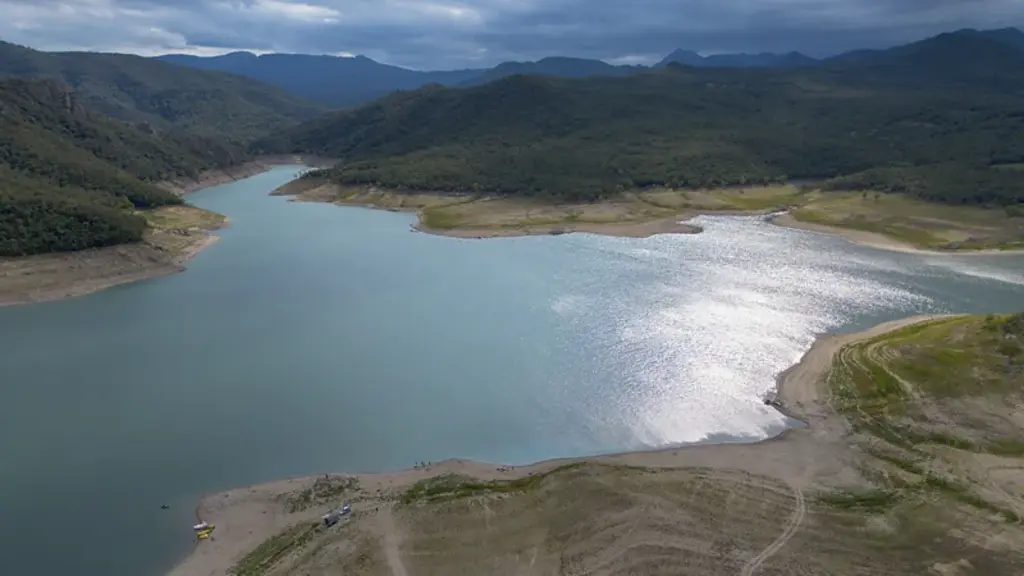
A Journey Through Time
Investigating these recently discovered formations is similar to traveling through time. Every stone and fragment of rubble has a narrative to tell. The massive ovens and storage rooms of the cannonball factory hint at a period when the area was on high alert, bracing for possible invasions. Because of its advantageous location next to the lake, the factory would have had convenient access to water for transportation and cooling. On the other hand, there is a sense of peace in the church. Its exquisite yet understated design echoes the architectural motifs of the time. Inside, religious symbols and faded frescoes allude to the once-vibrant community that convened here. It’s simple to picture a packed church where people are raising their voices in song and prayer. Historians from the area have been diligently recording and conserving these locations. They have discovered implements and relics that shed further light on the day-to-day activities of the people who originally lived in this region. Every discovery, whether they are religious artifacts discovered in the chapel or the actual cannonballs, adds a new dimension to the narrative.
The Human Connection
The human connection that this discovery promotes is what really sets it apart. The appearance of these structures has inspired wonder and introspection in the neighborhood. For many, it’s a reminder of the tenacity and resourcefulness of their forebears. The church and factory serve as representations of human nature’s duality, which includes the ability to be both peaceful and conflictual. Students now have a concrete link to their past thanks to the inclusion of field trips to the location in the curriculum of nearby schools. People of all ages can learn about the past through guided tours, which promote continuity and a sense of pride. Additionally, travelers have been lured to the location by the exceptional chance to investigate a previously undiscovered period of history.
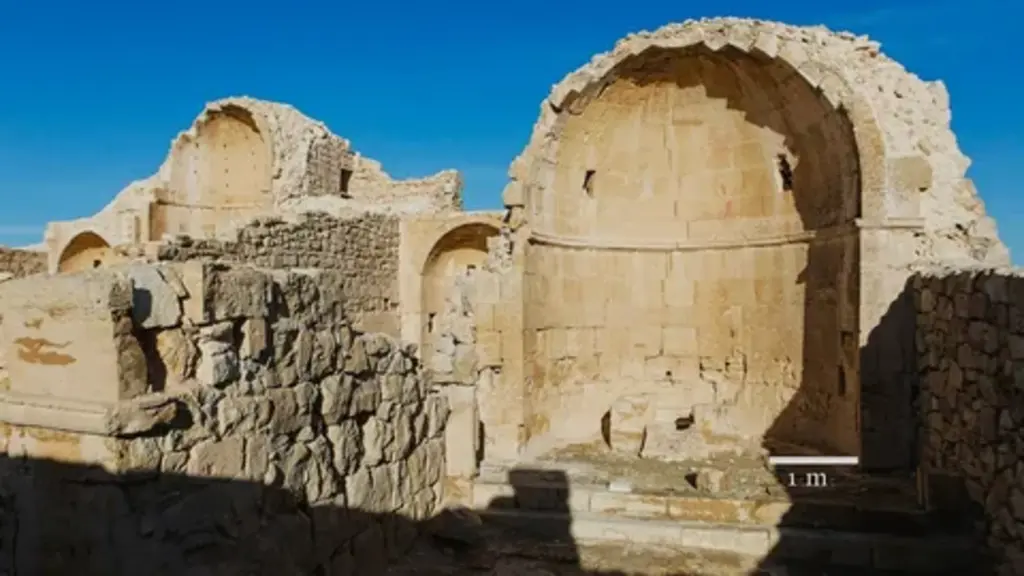
Challenges and Preservation
Although the finding is thrilling, there are a lot of obstacles to overcome. There is an urgent need for preservation efforts because the exposed structures are susceptible to the elements. To preserve and stabilize the site, local government officials, historians, and environmentalists are working together. This entails building safeguards, thoroughly recording the structures, and looking for financing for extended conservation initiatives. The lake’s own drying out serves as a reminder of the larger environmental problems the area is dealing with. A lot of work is being done to identify and address the causes of the lake’s deterioration. Studying water management techniques, addressing the effects of climate change, and looking into long-term solutions to protect the environment are all part of this.
A Glimpse into the Past
The chapel and cannonball factory that Spain’s dried-up lake exposed provide an intriguing look into the past. They serve as a reminder of the intricate ways that faith and industry coexisted throughout history. After being concealed for a considerable amount of time, these buildings now serve as silent reminders of the lives of our predecessors. We are reminded of time’s passing and the enduring character of human endeavor as we stroll through the factory and the church. The finding makes us think about how we fit into history, how much the stories of the past have shaped the present, and what kind of legacy we want to leave for the next generation. Ultimately, the community has benefited from the drying lake by having an opportunity to honor its history, rekindle ties to its past, and preserve the legends around the historic church and cannonball factory. This underground world’s profound reminder that history is constantly there and just waiting to be unearthed and recognized is potent.
Israeli Airstrikes Target Houthi Rebels in Yemen After Tel Aviv Attack
Add Your Heading Text Here
Lorem ipsum dolor sit amet, consectetur adipiscing elit. Ut elit tellus, luctus nec ullamcorper mattis, pulvinar dapibus leo.

The recent exchange of gunfire between Israel and the Houthi rebels in Yemen highlights the erratic nature of regional tensions within the intricate web of Middle Eastern geopolitics. The series of events started with a fatal attack on Tel Aviv, Israel, that was claimed by the Houthi organization, which Iran supports. Israeli attacks on oil facilities in Yemen’s west coast port were launched in quick reprisal, resulting in several fatalities and injuries.
Amid long-standing regional animosities and geopolitical manoeuvres, the escalation took place. According to Al Masirah TV, which is controlled by the Houthis, Israeli airstrikes targeted oil plants, causing severe injuries to 87 people, many of whom had severe burns, and tragically taking at least three lives. In addition to making people’s suffering worse, the aftermath of such attacks feeds the decades-long cycle of violence and retaliation that has characterized the area.
The repercussions of these incidents are disastrous for the individuals who are immediately impacted. Families grieve for loved ones died in the strikes, while medical facilities and emergency personnel work in difficult circumstances to care the injured. The number of people killed in the crossfire emphasizes how urgently diplomatic measures to lower tensions and stop more violence are needed.
The conflicts between Israel and the Houthis are a reflection of larger strategic calculations and alliances on the geopolitical scene. Israel sees the acts of the Houthi group as a danger to its national security since it has traditionally been considered a crucial partner of Western countries in the area. Supported by Iran, the Houthis saw Israeli attacks as a component of a larger strategy aimed at undermining their rights and sovereignty in Yemen.
In addition to the direct military activities and their aftermath, the battle highlights more profound regional fault lines. There has been controversy around Iran’s backing of the Houthi rebels in Yemen, which has ramifications for both the domestic stability of Yemen and the larger regional dynamics including Saudi Arabia and other Gulf states. The battle has attracted a wide range of foreign players, all of whom have different goals and interests, making it more difficult to achieve a lasting peace.
In the middle of the mayhem and uncertainty, humanitarian issues are very important. After years of civil conflict and a humanitarian catastrophe, Yemen today confronts more difficulties as a result of the latest bombings. Attacks against vital infrastructure, such oil facilities, not only cause economic disruption in the area but also worsen the already poor humanitarian situation by restricting access to resources and services.
International bodies have called for moderation and diplomacy in response to the increasing violence. All parties concerned must put the safety of civilians first and abide by international humanitarian law, according to the United Nations and other humanitarian organizations. In order to lessen the suffering of those trapped in conflict zones, efforts must be made to mediate ceasefires and provide humanitarian access.
The human cost of conflict is at the core of the issue. There are real-life accounts of regular individuals whose lives are irrevocably changed by violence and displacement behind the headlines and geopolitical assessments. While children grow up in circumstances damaged by violence and insecurity, families that have been uprooted from their homes search for safety and stability amidst the upheaval.
The requirement to put discussion above dissension, collaboration above confrontation, and the defense of human rights above all else is still evident as the international community struggles to understand the intricacies of the Middle Eastern problems. The cycle of violence and suffering can only be stopped by persistent diplomatic efforts and a dedication to peacebuilding, opening the door for a future in which everyone in the area may live in dignity and security.
The latest confrontations that have broken out in Yemen between Israel and the Houthi rebels highlight how urgently a comprehensive and inclusive strategy for addressing regional crises is needed. The human cost of violence must continue to be the primary focus of international efforts to advance peace, stability, and justice in the Middle East and beyond, above and beyond military measures and strategic considerations.
“Exploring the Allure of French Castles: Who Wants to Buy?”
A Tale of History and Grandeur: Who Wants to Buy a French Castle?
The captivating charm of centuries-old châteaux may be found tucked away in the bucolic settings of rural France, where vineyards and rolling hills give the impression that time has stood still. The minds of visionaries, historians, and adventurers have long been captivated by these majestic monuments steeped in grandeur and history. Beyond their mythical exteriors and colorful histories, however, is a nuanced reality where the allure of possessing a French castle collides with the realities of upkeep, preservation, and modernization.

Those who are captivated by the thought of owning a piece of history typically make the decision to buy a French castle because they have a strong love for their heritage and want to fully experience France’s rich cultural diversity. Every castle, from the massive Renaissance châteaux with exquisite turrets and gardens to the ancient fortifications with formidable stone walls, tells a different tale and reflects the architectural styles of its time. These sites provide as a canvas for imaginative restoration and preservation projects in addition to providing a window into the past.
But having a castle of your own has its own charms and drawbacks. There are significant expenses related to maintenance and upkeep beyond the original purchase price, which can vary from a few hundred thousand euros to several million depending on the property’s size, location, and condition. Historic elements like tapestries, frescoes, and elaborate woodwork must be preserved, which calls for specific training and funding. In order to ensure that any alterations or restorations are done with the utmost care and regard for the historical integrity of the castle, many potential owners must also traverse the strict restrictions designed to conserve France’s cultural heritage.
Moreover, there are unique logistical difficulties in incorporating a castle into contemporary living. Some purchasers would consider turning their castle into a posh home or boutique hotel, while others might look at chances for cultural tourism or event hosting. Although it takes careful planning and astute marketing to maximize revenue from rentals or guided tours, the possibility of doing so can help defray upkeep expenses.
Owning a French castle is typically a very personal venture, beyond the pragmatics, and a symbol of one’s admiration for art, architecture, and the preservation of cultural heritage. Purchasing a castle often reflects a dedication to stewardship and a want to leave a lasting legacy for future generations, rather than just financial concerns.
The timeless charm of narrative and the preservation of communal memory are only two of the intangible qualities that make French castles so alluring, even beyond their actual walls. Every castle is a testament to a bygone period; the murmurs of centuries-old tales of intrigue, love, and battle reverberate down its hallways. These holdings provide a wealth of artifacts and archive documents for historians and archaeologists, providing insight into the lives of both nobles and commoners.
Nevertheless, despite their romance and charm, French castles’ futures continue to be a source of discussion and worry. The problem is to make sure that these architectural wonders continue to captivate the imagination of coming generations as populations change and cultural values change. In order to preserve France’s cultural legacy for future generations, it will be imperative to support creative preservation efforts, encourage community involvement, and promote sustainable tourism.
Nevertheless, despite their romance and charm, French castles’ futures continue to be a source of discussion and worry. The problem is to make sure that these architectural wonders continue to captivate the imagination of coming generations as populations change and cultural values change. In order to preserve France’s cultural legacy for future generations, it will be imperative to support creative preservation efforts, encourage community involvement, and promote sustainable tourism.
In summary, buying a French castle is a result of a combination of enthusiasm, practicality, and a keen understanding of the past. The continuing heritage of these architectural wonders is demonstrated by the dedication to preservation and management that lies underneath the fairytale charm of turrets and towers. French castles have always captured the imaginations of those who dare to dream of possessing a piece of history, whether as a private home, tourist attraction, or historical site.
A sense of time travel to a bygone period of romance and chivalry, of knights and nobles, is irresistible when the sun sets over the undulating French countryside, bathing the ancient stones of a castle in a golden glow. Every castle has a story to tell, one filled with grandeur and history, ready to be shared and treasured for future generations, right in the center of France, where the past and present collide.
Recent Posts
- “The Surprising Legacy of the World’s Oldest Living Tree: Insights and Discoveries”
- “The Amazon Effect: What Happens When E-Commerce Comes to Your Street”
- “Barack and Michelle Obama Throw Support Behind Kamala Harris for President”
- “Coco Gauff Reflects on the Honor of Leading Team USA as Flag Bearer”
- Europe’s Undisputed Tea Masters: A Journey to the Under-the-Radar Region

Categories
Recent Posts
- “The Surprising Legacy of the World’s Oldest Living Tree: Insights and Discoveries”
- “The Amazon Effect: What Happens When E-Commerce Comes to Your Street”
- “Barack and Michelle Obama Throw Support Behind Kamala Harris for President”
- “Coco Gauff Reflects on the Honor of Leading Team USA as Flag Bearer”
- Europe’s Undisputed Tea Masters: A Journey to the Under-the-Radar Region




